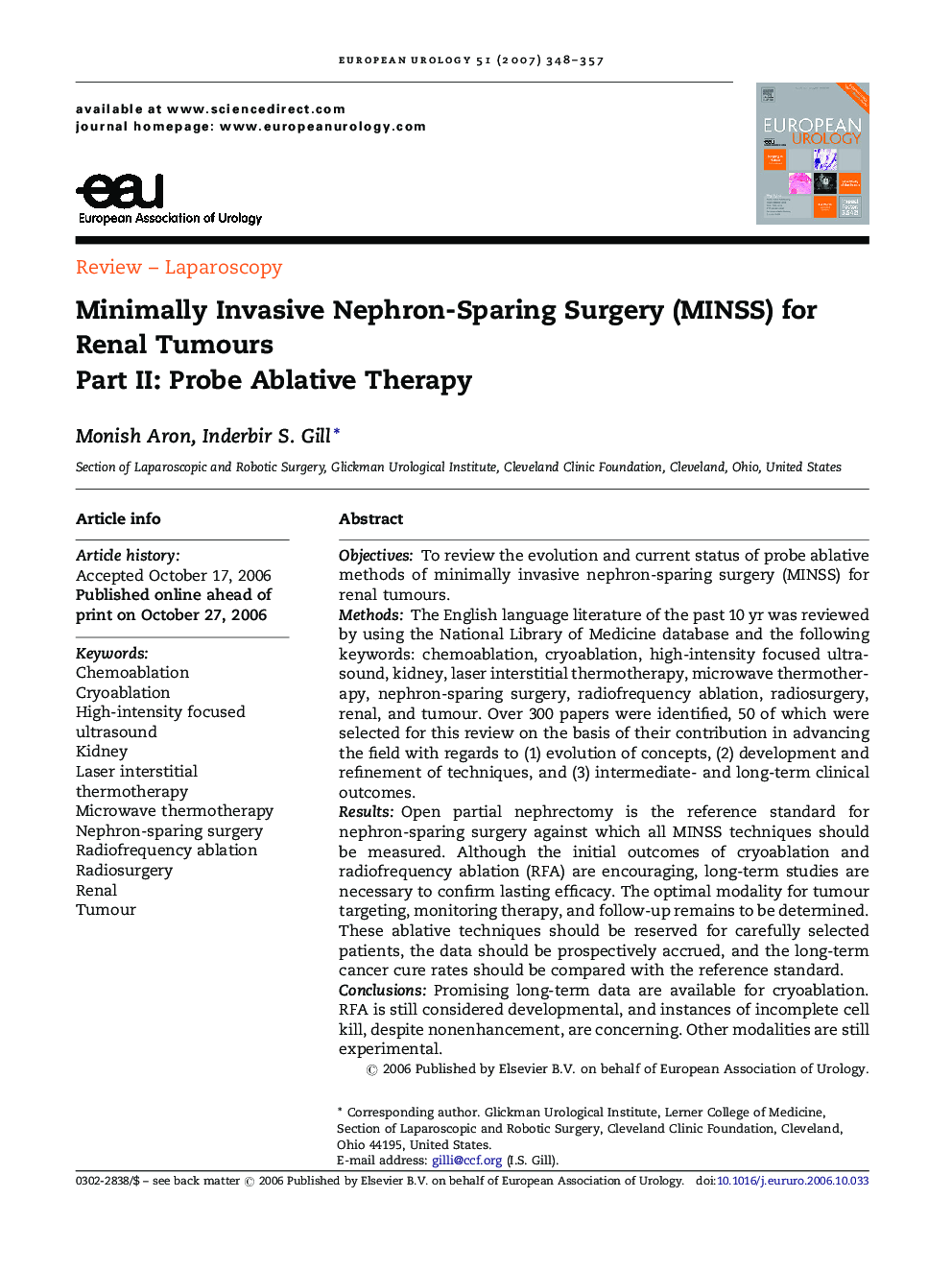| Article ID | Journal | Published Year | Pages | File Type |
|---|---|---|---|---|
| 3928900 | European Urology | 2007 | 10 Pages |
ObjectivesTo review the evolution and current status of probe ablative methods of minimally invasive nephron-sparing surgery (MINSS) for renal tumours.MethodsThe English language literature of the past 10 yr was reviewed by using the National Library of Medicine database and the following keywords: chemoablation, cryoablation, high-intensity focused ultrasound, kidney, laser interstitial thermotherapy, microwave thermotherapy, nephron-sparing surgery, radiofrequency ablation, radiosurgery, renal, and tumour. Over 300 papers were identified, 50 of which were selected for this review on the basis of their contribution in advancing the field with regards to (1) evolution of concepts, (2) development and refinement of techniques, and (3) intermediate- and long-term clinical outcomes.ResultsOpen partial nephrectomy is the reference standard for nephron-sparing surgery against which all MINSS techniques should be measured. Although the initial outcomes of cryoablation and radiofrequency ablation (RFA) are encouraging, long-term studies are necessary to confirm lasting efficacy. The optimal modality for tumour targeting, monitoring therapy, and follow-up remains to be determined. These ablative techniques should be reserved for carefully selected patients, the data should be prospectively accrued, and the long-term cancer cure rates should be compared with the reference standard.ConclusionsPromising long-term data are available for cryoablation. RFA is still considered developmental, and instances of incomplete cell kill, despite nonenhancement, are concerning. Other modalities are still experimental.
